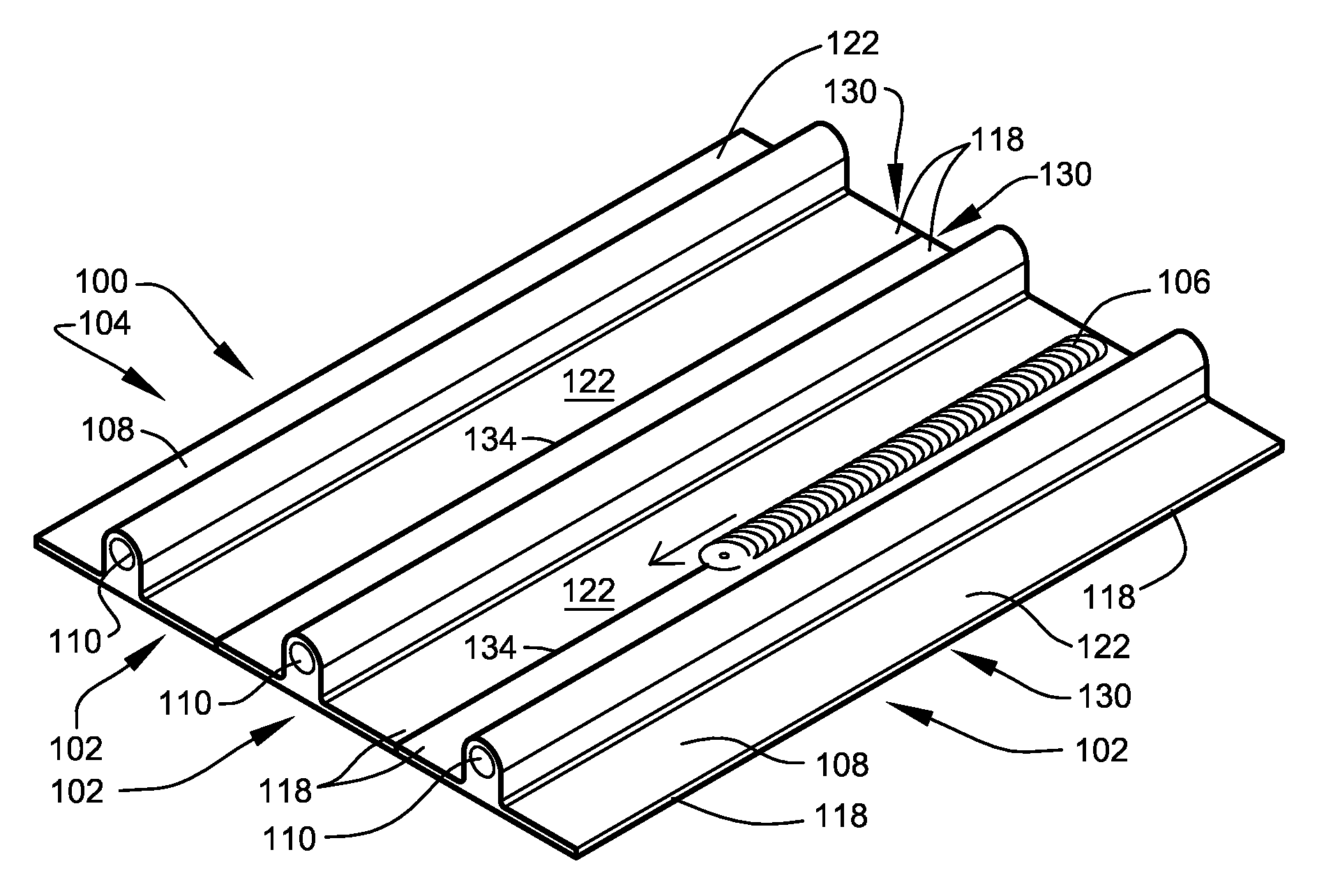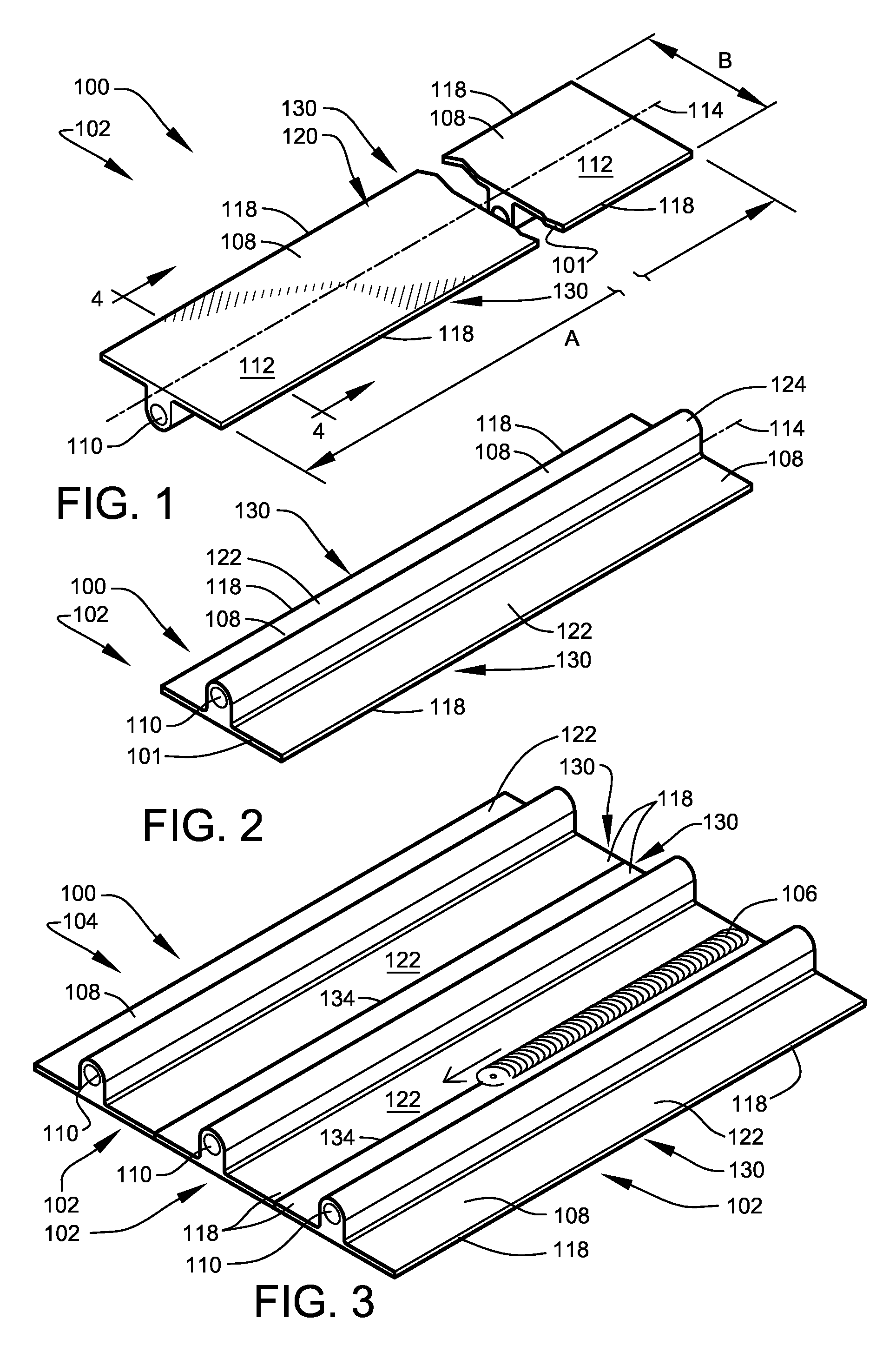Radiator systems
a technology of radiators and radiator assemblies, which is applied in the direction of cosmonautic vehicles, lighting and heating apparatus, heating types, etc., can solve the problems of extreme thermal cycling of radioators operating in space environments
- Summary
- Abstract
- Description
- Claims
- Application Information
AI Technical Summary
Benefits of technology
Problems solved by technology
Method used
Image
Examples
Embodiment Construction
[0039]Applicant conceived the present system when faced with the need for a range of durable low-mass radiators that could withstand the dynamic loading associated with operation in a space environment. Thermal control in spacecraft includes the gathering, transfer, and rejection of waste heat from vehicle components to the surrounding space environment. Radiators and similar heat-rejection devices operate by transferring heat from a working fluid to a surface for radiation or convection away from the fluid. In general, heat-rejection apparatus in spacecraft should comprise relatively low mass while exhibiting robust operational reliability.
[0040]Problems arise when radiator components are formed by joining flow tubes and independently-formed thin heat-rejection sheets. For example, in testing methods of joining flow tubes to a thin aluminum facesheet, applicant identified significant problems associated with the mechanical performance of these connections when the composite assembl...
PUM
| Property | Measurement | Unit |
|---|---|---|
| thickness | aaaaa | aaaaa |
| distance | aaaaa | aaaaa |
| thickness | aaaaa | aaaaa |
Abstract
Description
Claims
Application Information
 Login to View More
Login to View More - R&D
- Intellectual Property
- Life Sciences
- Materials
- Tech Scout
- Unparalleled Data Quality
- Higher Quality Content
- 60% Fewer Hallucinations
Browse by: Latest US Patents, China's latest patents, Technical Efficacy Thesaurus, Application Domain, Technology Topic, Popular Technical Reports.
© 2025 PatSnap. All rights reserved.Legal|Privacy policy|Modern Slavery Act Transparency Statement|Sitemap|About US| Contact US: help@patsnap.com



